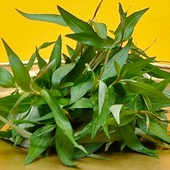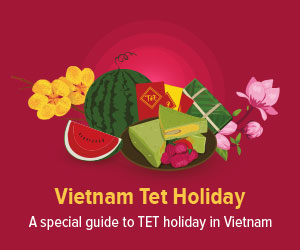All about Gastronomy Tourism in Vietnam
If you are seeking for a country where you can not only enjoy fabulous natural scenery, beautiful beaches and grandiose mountains but also taste a variety of unique delicious local food, welcome to Vietnam.
Overview
In today's world, the desire to experience the culinary delights of various countries serves as a significant motivation for travelers. This trend has given rise to a unique form of tourism known as culinary tourism.
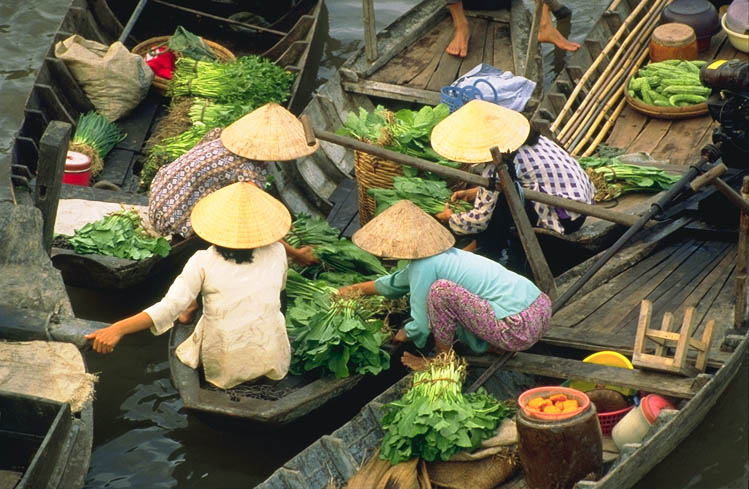 Floating market in Can Tho, Vietnam
Floating market in Can Tho, Vietnam
If you are looking for a destination where you can enjoy stunning natural landscapes, pristine beaches, and majestic mountains while indulging in a wide array of delicious local cuisine, Vietnam is the perfect choice.
Vietnam boasts a rich cultural tapestry composed of 54 ethnic groups, each with its own customs and traditions, divided across three geographical regions that showcase diverse cultures and climates. Additionally, Vietnamese cuisine has been influenced significantly by both Chinese and French culinary traditions throughout history.
This rich historical backdrop has transformed Vietnam into a vibrant amalgamation of culinary practices, making it an outstanding destination for gastronomic tourism.
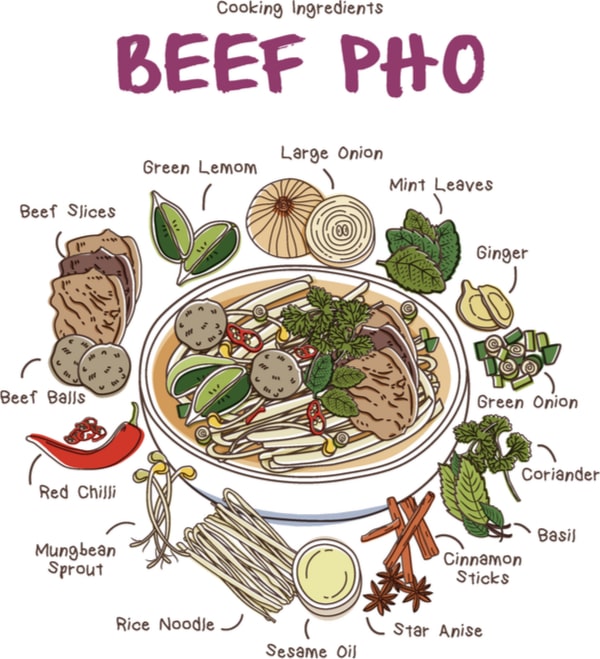 Ingredients for Vietnamese beef noodles
Ingredients for Vietnamese beef noodles
About Vietnamese Gastronomy
Vietnamese cuisine is renowned for its distinctive flavor profiles, seamlessly blending various ingredients. Dishes are meticulously balanced, showcasing the perfect harmony of spicy, sour, and salty flavors. For many international visitors, enjoying Vietnamese cuisine offers a glimpse into the art of culinary balance rooted in the Five Elements of Eastern philosophy, aimed at providing both nutritious and delectable meals.
For instance, dishes with cooling properties are best accompanied by those that are hot and spicy, creating a balance essential for health. This idea of equilibrium can be observed even in the finest details, such as dipping sauces. Vietnamese culinary tradition often combines the tangy zest of lime and fresh chili peppers with a sweet-salty fish sauce, complementing dishes such as Bun cha and Banh Cuon.
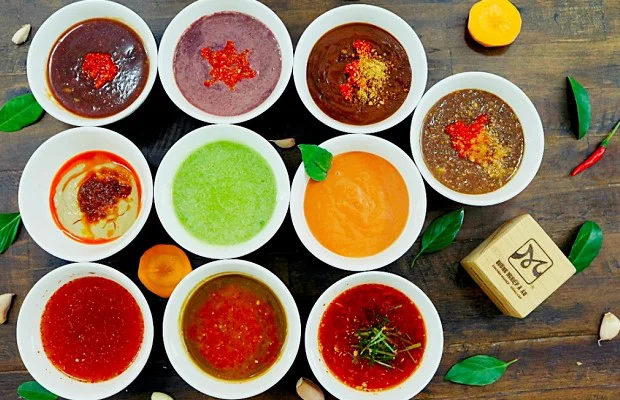 A variety of dipping sauces exemplifying sweet, sour, tangy, and spicy flavors. Photo: huongnghiepaau.com
A variety of dipping sauces exemplifying sweet, sour, tangy, and spicy flavors. Photo: huongnghiepaau.com
While Vietnamese gastronomy draws influences from other cultures including China and France, it retains its own distinctive focus: the taste of food takes precedence over aesthetics or nutritional value. As a result, cooking Vietnamese dishes, which may not be as complicated as Chinese cuisine or as visually intricate as Japanese dishes, leaves a lasting impression based purely on flavor.
Travelers can explore many of Vietnam's iconic destinations in a short time, yet they will still find that they cannot complete the vast menu of regional dishes due to the incredible diversity within Vietnamese cuisine. Hanoi offers the most extensive selection of native dishes representing northern Vietnam, including famous offerings such as Pho, Banh Cuon, Bun Cha, and Cha Ca.
The southern region, exemplified by Ho Chi Minh City, is heavily influenced by Thai and Chinese cuisines, offering dishes that are tangy and spicy, while the Central region is celebrated for its fresh seafood and the royal gastronomy of Hue (you can explore regional variations in Vietnamese food culture here).
What You Can Do if You Come to Vietnam for Food
Many travelers head to Vietnam eager to taste authentic local dishes such as Pho or crab spring rolls. While some enjoy the experience of dining at street vendors, others may prefer the upscale and polished dining at establishments like Quan An Ngon in both Hanoi and Ho Chi Minh City. Most visitors share their food adventures through words and photos, whether planned or spontaneous.
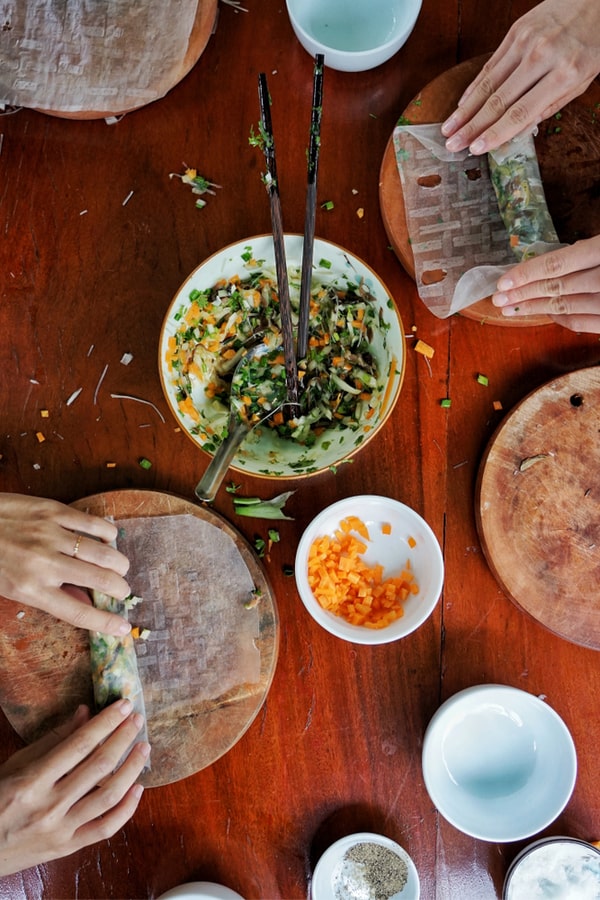 Unique cooking classes that immerse you in the entire food journey: growing, selling, and processing.
Unique cooking classes that immerse you in the entire food journey: growing, selling, and processing.
For those genuinely interested in a culinary tour of Vietnam, here are some suggestions:
- You can navigate your food journey independently or enlist the help of a travel agency to arrange a food tour. Regardless, gaining some basic knowledge about Vietnamese cuisine beforehand will enhance your experience greatly.
- If you opt for a guided tour, verify the details of what is included. Many tour operators offer cooking class experiences, which can be fun and educational, but you might save money by booking directly with the cooking school. Some well-curated tours offer unique experiences, including opportunities to meet local farmers and learn about herb harvesting firsthand.
- If you're crafting your own culinary trip, pick a few regions that intrigue you the most (ideally, no more than five) to ensure a deeper exploration of each area's food culture. For example, Hue is excellent for diving into royal delicacies. Check out cooking classes in Hue to see typical activities for visitors. Meanwhile, Hanoi is a charming capital rich in unique flavors—begin your culinary journey in the Old Quarter to fully appreciate its essence.
- Whichever path you choose, don't forget to bring a good camera. Photographs often convey the experience more powerfully than words, and as the saying goes, "Cameras don't lie!" Share your culinary journey online or with friends and family.
- Finally, while the allure of street food is undeniable, exercising caution is wise, especially if you are unfamiliar with developing countries. Your digestion may not be acclimated to local bacteria. Carrying hand sanitizer is a small addition to your travel kit that can help prevent illness.
Enjoy the vibrant flavors of Vietnam! Bon Appétit!
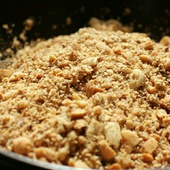
Top 5 Side Dishes to Serve with Xôi (Vietnamese Sticky Rice)
Most common add-ons for Vietnamese Xoi.
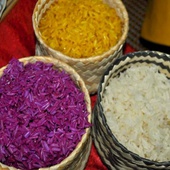
Different Types of Vietnamese Sticky Rice (Xoi)
It will be a big miss if you come to Vietnam without trying “xoi”.



